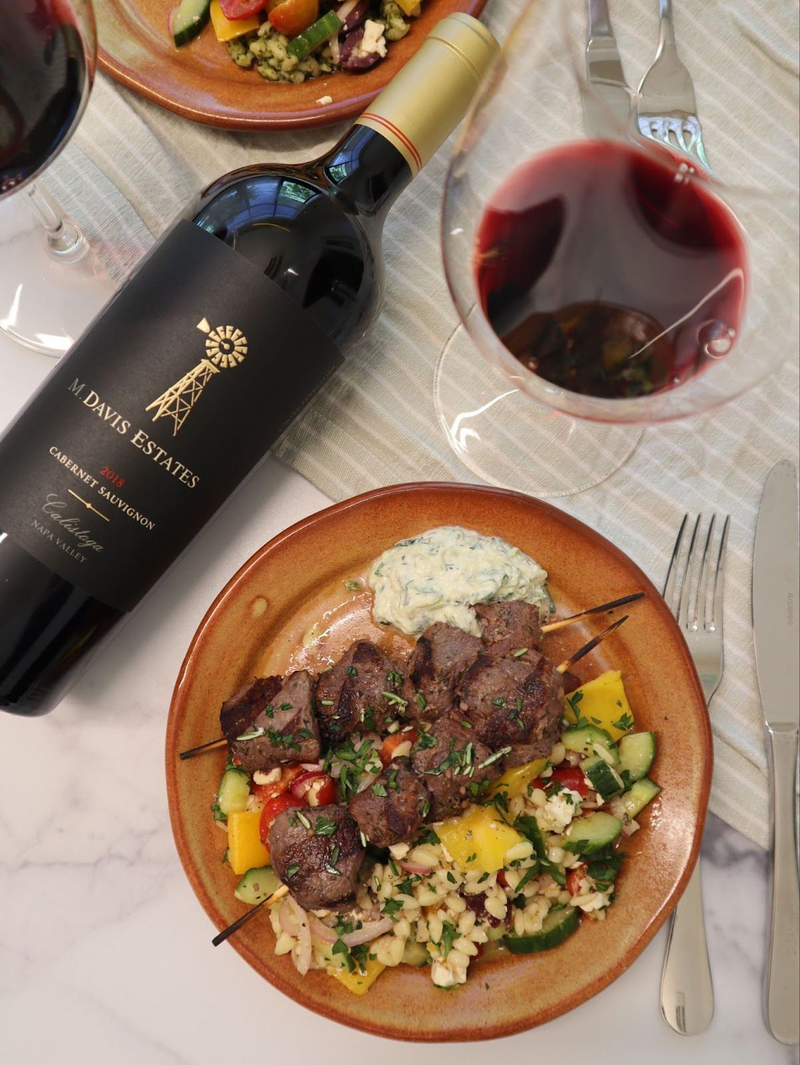What Makes the Best Napa Valley Cabernet Sauvignon?
You know that moment when you take your first sip of a truly exceptional Cabernet and suddenly understand why people get so passionate about wine? It’s not just the rich, velvety texture or the way the flavors seem to dance across your palate. It’s the realization that you’re tasting something special, something that captures the essence of Napa Valley in a single glass.
Finding the best Napa Valley Cabernet Sauvignon isn’t about chasing the most expensive bottle or following the latest wine magazine ratings. It’s about understanding what transforms good grapes into liquid poetry. From the sun-soaked vineyards of Oakville to the mountain slopes of Howell Mountain, Napa Valley produces Cabernet Sauvignon that sets the global standard for excellence.
Terroir: Where Geography Meets Greatness
The secret behind top Napa Valley Cabernet Sauvignon starts in the vineyard, where geography creates the foundation for exceptional wine. Napa Valley’s unique combination of Mediterranean climate, diverse soils, and varied elevations provides ideal conditions for Cabernet Sauvignon to express its full potential.
Each sub-appellation within Napa Valley contributes distinct characteristics to the wines produced there. Rutherford delivers earthy complexity with its famous “Rutherford dust,” while Oakville’s gravelly soils produce wines with exceptional structure and aging potential. Calistoga, positioned at the valley’s northern end, offers a warmer microclimate and volcanic soils that create bold, expressive Cabernets with concentrated fruit flavors and distinctive mineral undertones. Mountain vineyards like those on Diamond Mountain or Howell Mountain create intensely concentrated wines with remarkable depth.
The best vineyard sites share common elements:
- Well-drained soils that force vines to develop deep root systems
- Optimal sun exposure throughout the growing season
- Temperature variation between day and night to preserve acidity
- Protection from extreme weather while maintaining adequate stress

Winemaking Excellence: Craft Meets Science
The best Cabernet Sauvignon Napa Valley wineries understand that exceptional fruit deserves equally exceptional handling. Master winemakers combine time-tested techniques with modern precision to create wines that truly express their vineyard origins.
Traditional methods often produce the most compelling results. Hand-harvesting ensures only ripe, healthy grapes make it to the winery, while careful sorting removes any imperfect berries. Extended maceration and thoughtful oak aging develop the complex flavors and textures that define premium Cabernet Sauvignon. Many producers also incorporate thoughtful food pairings into their winemaking philosophy, crafting wines that complement fine dining experiences.
Essential winemaking practices include:
- Gentle extraction to preserve delicate aromatics
- Temperature-controlled fermentation for optimal flavor development
- French oak aging in a mix of new and neutral barrels
- Minimal intervention to let the vineyard character shine through

What to Look For: Quality Indicators
Recognizing exceptional Napa Cabernet requires understanding the characteristics that separate great wines from merely good ones. Napa Cabernet Sauvignon reviews consistently highlight certain qualities that indicate superior winemaking and vineyard management.
The best examples display immediate aromatics that continue developing in the glass, revealing layers of dark fruit, spice, and mineral complexity. On the palate, look for wines that balance power with elegance, offering rich flavors without overwhelming tannins or excessive alcohol heat. For serious collectors, exploring exceptional bottles like the 2021 Napa Valley Cabernet Sauvignon in magnum format showcases how proper bottling enhances aging potential.
Quality markers to identify:
- Deep, vibrant color without cloudiness or off-putting hues
- Complex aromatics that evolve and intensify with air exposure
- Balanced structure with integrated tannins and bright acidity
- Long finish that reveals new flavors as the wine fades
Aging and Investment Potential
The hallmark of the best Napa Valley wine lies in its ability to improve with proper cellaring. Premium Cabernet Sauvignon transforms over years of bottle aging, developing tertiary flavors and aromas that add profound complexity to the original fruit character.
Young Napa Cabernet often shows bold fruit flavors and oak influence prominently. With 5-10 years of proper storage, these elements integrate while developing secondary characteristics like leather, tobacco, and earth. The finest examples can continue evolving for two decades or more, rewarding patient collectors with wines of extraordinary depth and nuance. Understanding which producers consistently craft age-worthy wines becomes essential, which is why exploring guides to top-rated Napa Valley wineries helps identify bottles worth cellaring.
Aging indicators include:
- Firm tannin structure that will soften and integrate over time
- Bright acidity to maintain freshness during extended aging
- Concentrated flavors that can withstand decades of development
- Proper bottling with quality closures for long-term stability

Experience the Best: Your Next Step
Understanding what makes exceptional Napa Valley Cabernet Sauvignon is just the beginning. The real discovery happens when you taste these remarkable wines yourself, experiencing firsthand how terroir, winemaking, and time combine to create something truly special.
For those ready to explore premium selections, browsing carefully curated current releases reveals the diversity and quality that Napa Valley offers. Ready to taste the difference that true craftsmanship makes? Book your wine tasting experience and discover why Napa Valley Cabernet Sauvignon continues to set the standard for excellence worldwide.
